Subscription Analytics Guide & Analysis

Subscription services are everywhere and are quickly becoming the preferred way to shop.
With the subscription economy projected to reach $1.5 trillion in 2025 according to UBS Wealth Management and Bernstein, it’s only natural that more brands are offering subscription services for their customers.
But it’s not only big stores who can reap the benefits. Small to medium Shopify business owners can also get a piece of the action. For example, mum and daughter owned hair care business CamelGlow operate on a subscription-based model for their hair care products.
To make the most out of offering a subscription service, it’s crucial to understand your subscription analytics. At Upscribe, we specialise in making subscription management as easy as possible. So, let’s take a look at subscription analytics and how they can help grow your business.
What is subscription analytics?
Subscription analytics is a set of data that help you understand your customers and can be used as a growth tool. It enables you to optimize your business and understand the most valuable customers to focus on and which ones are likely to churn.
An analytics tool attaches to your Shopify store, measures all subscriber activity, and provides accurate and up-to-date information to support business understanding and growth.
Collect customer data, behaviour and transaction history for analysis later to get a birds-eye-view of your business success and understand where to focus your efforts for improvement.

Why are subscription analytics important?
The goal of subscription analytics is to provide a complete picture of your customer subscriptions in order to help you scale your business.
You can perform better as a business.
Your company can perform better with more information about your customers. You can use this data to improve your product or service and target customers better. Also, you’ll also better understand how to get more customers and improve your marketing strategy.
You can create a personalized experience.
Customers respond well to a tailored shopping experience. It lets them know that the brand really cares about their needs and is doing what it can to support them.
This can be anything from offering them discounts or product recommendations to sending out newsletters with relevant information.
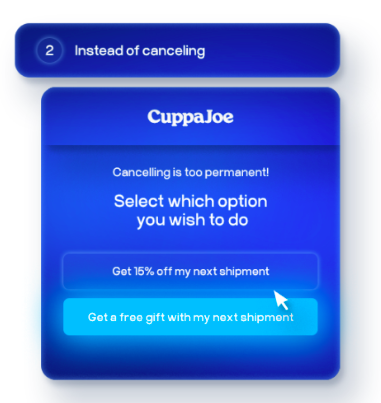
You could also use this information to send targeted emails about sales or new products that may interest the customer based on their interests and previous purchases.
You can better understand your customer’s needs.
This will help you get an idea of what they are looking for when they come to your website. It also allows you to understand their needs and what they don’t like about your products or services.
Sometimes, customers don’t want to commit to a subscription. You can find out which customers these are and offer them a different option.
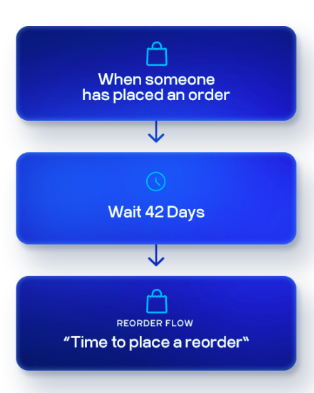
You can understand your products better.
Subscription data makes it easy to find out which of your products can be bundled and which ones can be brought to the forefront on the back of their success.
Once you find out which of your products customers are subscribing to, you can begin to recommend relevant products at checkout or in emails. You can then create product groupings that new customers might want to subscribe to in the future.
You can make better-informed decisions.
Subscription analytics is important to understand your customers better and make informed decisions based on the data. You will know where to focus your best efforts to make the most impact.
For example, if subscribers respond to checkout pop-ups, you know you should focus more on that particular tool.
How to get actionable insights from your subscription analytics
Define your key metrics
Analytics can be overwhelming. But you need to understand that not everything needs to be measured. Before getting analysis paralysis, define the metrics most important to look at.
Once those are established, it becomes much easier to spot anything else that might be useful, without taking the focus away from what matters most. Below are some of the key things to look at.
Annual or monthly recurring revenue (A/MRR)
Annual or monthly recurring revenue (A/MRR) is the total number of dollars your subscription-based business brings in each month.
With this, you can see what you’re making each month and what you’re projected to make each year. You can understand the baseline of your profits and a brief overview of success.
Churn rates
Churn is a measure of how many customers you lose in a given period of time. Typically, this is based on the number of people who cancel their subscriptions over that same period.
It’s important to understand what can be considered good and bad when it comes to churn rates before we look at ways to improve yours. What follows are some general guidelines:
Good: Under 2% annually
Not so good: Between 3% and 4% annually (2-3x industry average)
Customer lifetime value (CLV)
Customer lifetime value, or CLV, is the total spend of a particular customer. It helps businesses understand how much money every customer brings in monthly or annually.
Customer acquisition cost (CAC)
CAC is simply the cost of marketing your product divided by the number of customers you gained from that marketing campaign.
It’s a great way to understand how much you’re spending on getting new customers and can help you decide whether or not a particular marketing campaign is working.
Use subscription analytics software
Subscription analytics software, like Upscribe, is a tool that helps you analyze your subscription data and make better decisions about your business.
For instance, with Upscribe, you can carefully measure the health of your subscription program by displaying active subscriptions, new subscriptions, subscriber churn, and cancellations, as well as net revenue and average subscriber value.
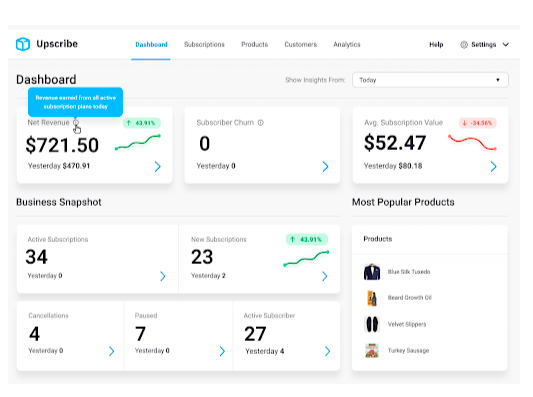
How it makes analysis easier
When you look at the figures that need analysis, it’s easy to get wary of the work that needs to go into it. Will you need a dedicated team member to rake through it? Will it take you away from running your business? How long will it take you to understand how to calculate it?
That’s what makes subscription analytics software so useful. It automates the whole thing so you can see exactly what you need at any time.
Identify ways to reduce churn
Use data to identify customers who are at risk of churning by reviewing your subscription analytics. This way you can proactively reach out to them with a personalised email or chatbot conversation to retain them and prevent loss.
Remember, it’s important not just to identify these customers but also to do something about them! The best way is through a combination of personalized email and automated messaging.
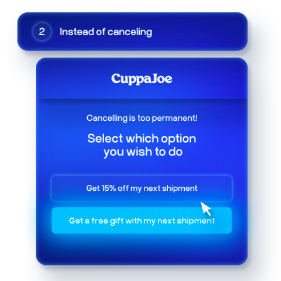
For example, Four Sigmatic decreased their churn rates using Upscribes cancellation flows. Now, their customers get options based on why they want to unsubscribe. These offer reduced churn rates by letting customers know they’re important and offering something personal in return for their business.
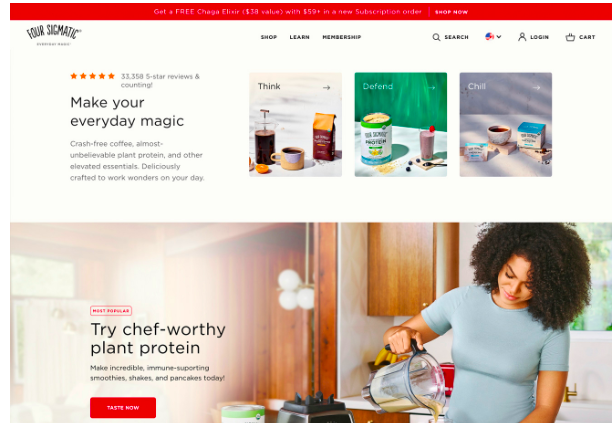
Identify opportunities for upselling/cross-selling
Use subscription data to identify opportunities for upsells and cross-sells. Create groups of relevant products that customers can benefit from by using together. For example, a meal subscription service can offer desserts that pair well with the chosen meals.
Compare your subscription data with acquisition efforts
This allows you to see how much of your revenue comes from new subscribers and how many renewals you’re getting from existing ones.
When analyzing this information, you need to consider what it means for your business in the context of your overall strategy. For example, if the majority of your revenue comes from new subscribers who joined within the last month or so but haven’t renewed yet, then maybe there’s room for improvement in terms of getting customers to renew their subscriptions
You could use this insight as inspiration for doing more cross-promotional campaigns with other publishers or changing how often people get billed – whatever works best for keeping them happy!
Conduct segmentation and cohort analysis
Segmentation and Cohort Analysis are powerful techniques that can help subscription-based businesses delve deeper into their customer data and extract valuable insights. Let’s explore each of these subscription analytics methods and provide examples to illustrate their significance:
Segmentation
For a Shopify-based online fashion store, segmentation can involve categorizing customers based on their purchase behavior, such as frequency of purchases, average order value, or product categories they are interested in. By segmenting customers in this way, the store can personalize marketing campaigns, recommend relevant products, and offer tailored discounts, increasing customer engagement and loyalty.
Example: An online fashion store could segment its customers into “Frequent Shoppers,” “Occasional Shoppers,” and “High-Spending Customers.” With this segmentation, the store can target “Frequent Shoppers” with loyalty rewards or exclusive early access to new collections while offering personalized product recommendations to “Occasional Shoppers” to encourage repeat purchases.
Cohort Analysis
For a Shopify store, cohort analysis can involve grouping customers who made their first purchase during specific time periods, such as monthly cohorts or seasonal cohorts. This subscription analytics technique that entails analyzing the behavior and retention rates of cohorts can reveal valuable insights into customer retention and how marketing efforts impact long-term customer engagement.
Example: Let’s say an online cosmetics store conducts a cohort analysis by grouping customers who made their first purchase during the holiday season (November-December) and customers who made their first purchase during the summer season (June-August). The store might find that customers who joined during the holiday season have higher retention rates due to the gifting nature of the purchases. Armed with this knowledge, the store can plan targeted marketing campaigns during subsequent holiday seasons to maximize customer retention.
Combined Impact
When combining segmentation and cohort analysis, a Shopify store can gain deeper insights into the preferences and behaviors of specific customer groups over time, allowing for more effective marketing strategies and customer retention efforts.
Example: An online electronics store segments customers based on their interest in different product categories (e.g., smartphones, laptops, gaming consoles) and then conducts a cohort analysis for each segment. The store may find that customers interested in gaming consoles (a segment) who made their first purchase during the Black Friday sale (a cohort) have higher long-term engagement and repeat purchases. In response, the store can create targeted promotions and exclusive offers for gaming consoles during future Black Friday sales to attract and retain similar customers.
Behavioral Analysis
Behavioral analysis is a subscription analytics technique that involves closely examining and understanding customer behavior throughout their interactions with the online store and products/services offered. By tracking user engagement, feature adoption, and interactions, you can gain valuable insights to improve customer satisfaction, boost retention, and reduce churn.
One way to do so is by monitoring how customers engage with your website, including metrics like page views, time spent on the site, and click-through rates. Understanding which pages or products attract the most attention can help identify popular offerings and areas that might need improvement.
Example: An online bookstore using Shopify may discover through user engagement analysis that its blog posts on book reviews and author interviews receive significantly more views and longer reading times compared to other content. Armed with this insight, the store can focus on creating more engaging and relevant content to attract more visitors and potentially convert them into customers.
Provide better customer service
Using a subscription analytics tool can help you provide better customer service by understanding the wants and needs of your customers.
Beekeeper’s Naturals and Calders + Lab provided better customer service using Upscribe’s subscription analytics tool. Customers could manage their own subscriptions much easier via SMS or email, reducing the amount of help centre tickets submitted. This was at a staggering 50% for Calders + Labs, proving their customers were much more satisfied with their service.
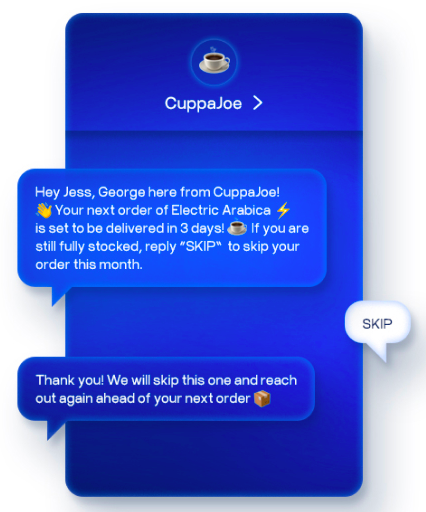
Best Tools for Subscription Analysis
We’ve compiled a list of the best subscription analysis tools. Check them out below:
1. Upscribe

Upscribe is a subscription and retention solution designed to empower Shopify merchants, fostering an environment for sustainable growth. On average, businesses utilizing Upscribe experience an impressive 80% annual growth, all while streamlining operations to save both time and resources.
Our platform distinguishes itself by prioritizing the enhancement of key metrics crucial to subscription-based businesses. Through Upscribe, merchants can strategically boost Average Order Value (AOV) and Lifetime Value (LTV), essential factors in driving long-term profitability. We also address the common challenge of customer churn, providing a robust set of features aimed at reducing subscriber attrition.
To help you get started, we offer a free subscription revenue calculator to give you a good idea of how much revenue your e-commerce subscription business can generate.
Key Features
- Strong Subscriber Experience: From intuitive interfaces to personalized interactions, our platform is designed to enhance customer satisfaction, fostering long-term loyalty and minimizing the risk of churn.
- Growth Tools Built to Scale: Upscribe’s growth-centric features enable Shopify merchants to expand their operations seamlessly, adapting to increasing demands and ensuring sustained business development without compromising efficiency.
- Single-Click Reorder Functionality: The single-click reorder functionality enhances customer convenience but also significantly boosts conversion rates, encouraging repeat business and contributing to increased Average Order Value (AOV) for merchants on the Upscribe platform.
Pricing

Upscribe simplifies pricing for subscription businesses by offering a single plan that is versatile enough to cater to the needs of any enterprise.
Priced at $100 per month plus a 1% fee on each transaction, our platform ensures transparency and predictability in costs. With no flat fee per transaction, Shopify stores can confidently leverage Upscribe to grow their subscription business without concerns about hidden costs, allowing them to focus on scaling their operations hassle-free.
2. ChartMogul

ChartMogul is a subscription analytics platform designed to facilitate data-driven decision-making and foster more efficient growth for businesses. By establishing a connection with your billing system, ChartMogul automates the reporting of key Software as a Service (SaaS) metrics, including Monthly Recurring Revenue (MRR), churn rates, and Lifetime Value (LTV).
Key Features
- Subscription Analytics: Gain deep insights into key metrics such as Monthly Recurring Revenue (MRR), churn rates, and Lifetime Value (LTV).
- CRM: Enhances user efficiency by consolidating customer data and subscription analytics in one platform.
- Accurate Data: With dependable data, users can make confident decisions, avoid errors in strategic planning, and maintain a solid foundation for sustainable growth.
Pricing

ChartMogul offers three pricing subscription plans:
- Free: Perfect for SaaS founders with less than $10k MRR
- Scale: Great for SaaS teams with traction, navigating the initial scaling stage
- Volume: Ideal for teams from initial scale to $100M ARR and beyond
3. ProfitWell

By incorporating revenue automation products, ProfitWell aims to provide businesses with accurate and free reporting, allowing users to gain insights into their performance, identify strengths, and pinpoint areas for improvement.
Key Features
- ProfitWell Metrics: By providing accurate and detailed analytics on metrics, you can make informed decisions, identify trends, and strategize for sustainable growth.
- Paddle Billing: Streamline the billing process for subscription businesses to ensure accuracy and efficiency in managing subscription transactions.
- Subscription Pricing Optimization: Empowers users to fine-tune their pricing strategies to align with the market demands.
Pricing
Profitwell Metrics is free forever, no matter your size. However, if you are looking for more advanced customization and support, the platform offers an Enterprise plan. Contact their team for more information.
4. Mixpanel

Offering a versatile approach, Mixpanel allows users to analyze metrics from various perspectives, breaking them down by behavior, demographics, or account type. With a multitude of options for slicing and dicing data, Mixpanel enables users to gain valuable insights in a matter of seconds.
Key Features
- Define Any Metric: Tailor analytics to specific business goals by creating and tracking custom metrics.
- See the Impact: Visualize and understand the consequences of changes or trends in data.
- Quantify Success: Dive into the quantitative measure of success and accurately gauge the effectiveness of your strategies.
Pricing

Mixpanel has three pricing plans to choose from: Starter (Free), Growth ($20/mo), and Enterprise ($833/mo).
5. Adapty

Adapty focuses on optimizing subscription revenue through efficient A/B testing for paywalls, enabling businesses to potentially double their subscription revenue within three months. The approach emphasizes quick and cost-effective monetization experiments.
Key Features
- Price Testing: Experiment with pricing strategies for in-app purchases without the need for app releases.
- Subscription Analytics: Provide users with valuable insights into the performance of their subscription models.
- Cohorts: Group customers based on specific criteria and analyze their behavior over time.
Pricing

Adapty offers four pricing plans: Free ($0/mo), Pro ($99/mo), Pro+ ($499), and Enterprise (custom).
6. Crazy Egg

By recording entire user sessions, Crazy Egg allows users to grasp general browsing patterns and delve into specific points in the buyer’s journey. Identify where drop-offs occur to make informed decisions for optimizing their website’s user experience and overall performance.
Key Features
- Heatmaps: Provides a visual representation of how visitors interact with elements on your website.
- Traffic Analysis: Gain insights into how visitors navigate your website.
- A/B Testing: Experiment with different versions of web pages to determine which performs better in achieving specific goals.
Pricing
No pricing is available on their website. Please contact their team for a demo and more information about their pricing plans.
7. TrackMySubs

TrackMySubs offers customized alerts to notify users before their next payment, ensuring timely and informed decisions. Whether managing personal subscriptions or overseeing multiple client relationships for a business, TrackMySubs simplifies the process, eliminating the need for manual payment tracking through messy spreadsheets.
Key Features
- Instant Alerts: Provide users with timely notifications before their next subscription payment.
- Organizational Features: Maintain a clear overview of recurring payments for a better organization and simplify the tracking process.
- Customize Timing and Notifications: Tailor subscription alerts according to users’ preferences and schedule.
Pricing

Choose from TracMySubs’ pricing plans: Basic (Free), Unlimited ($10/mo), and Enterprise ($30/mo).
A method to subscribe to
By now you should have a clearer understanding of how to use your subscription analytics. Using a subscription analytics tool, like Upscribe, it’s easy for anyone to get actionable insights from their data.
Remember that there are many different ways to approach this problem and no one approach is better than the other. A strong understanding of your customer base will allow you to make informed decisions about how best to reach them with content that resonates with them.
You can use subscription analytics in many different ways, from improving customer satisfaction scores to identifying high-value customers who are likely engaged with your brand or product.
Try Upscribe’s analytics tool to gain a better insight into your customer base today.
